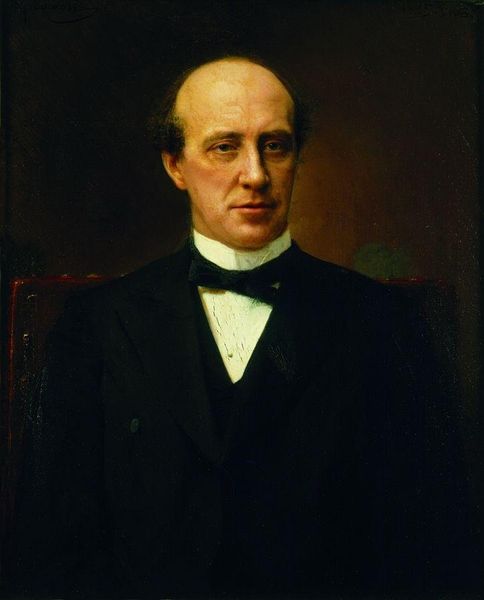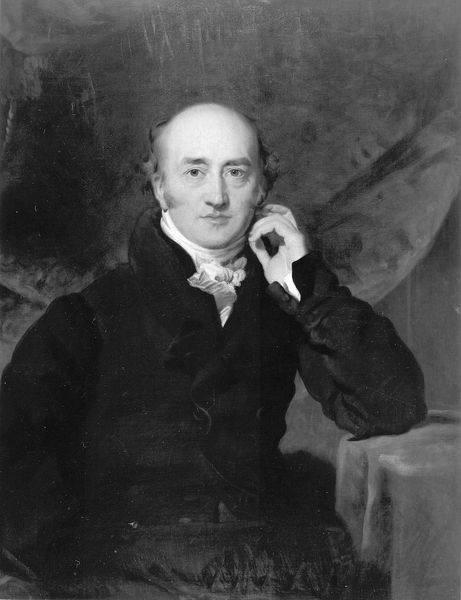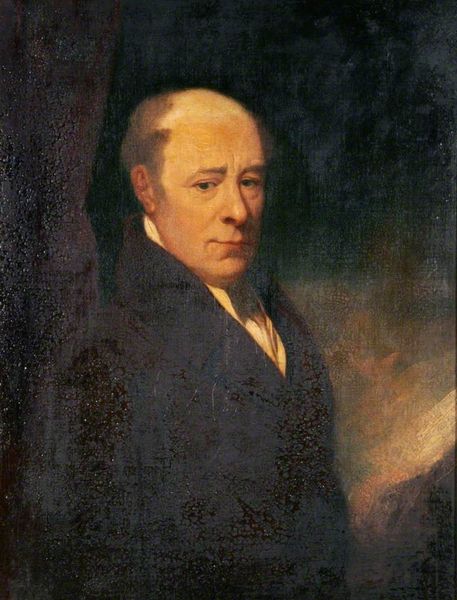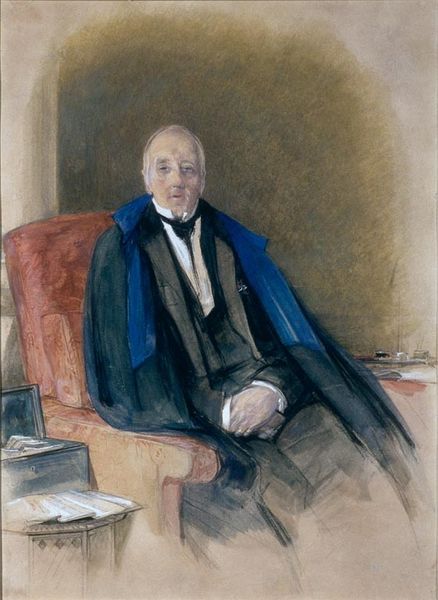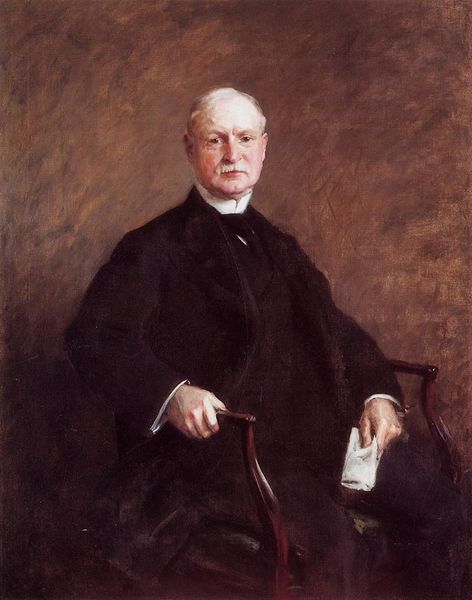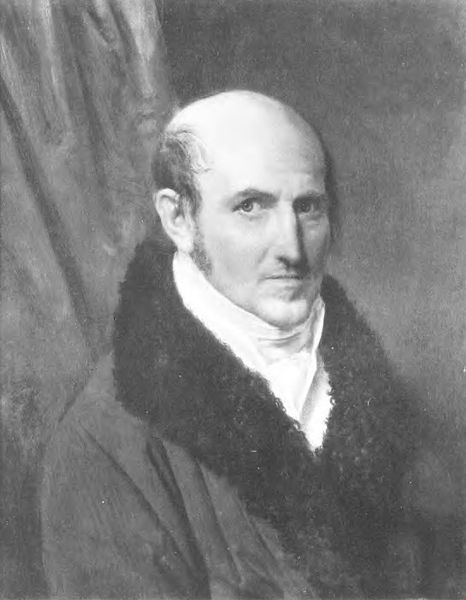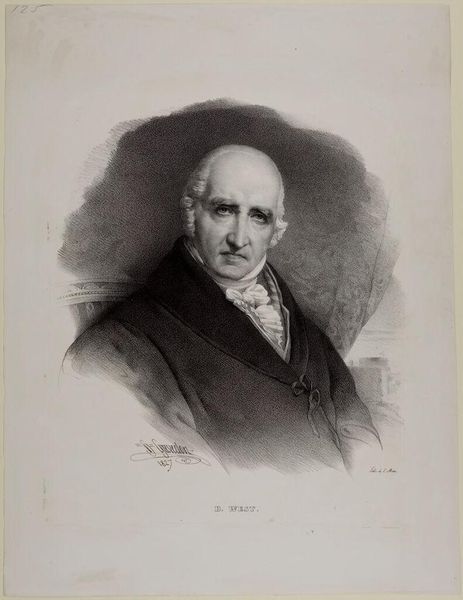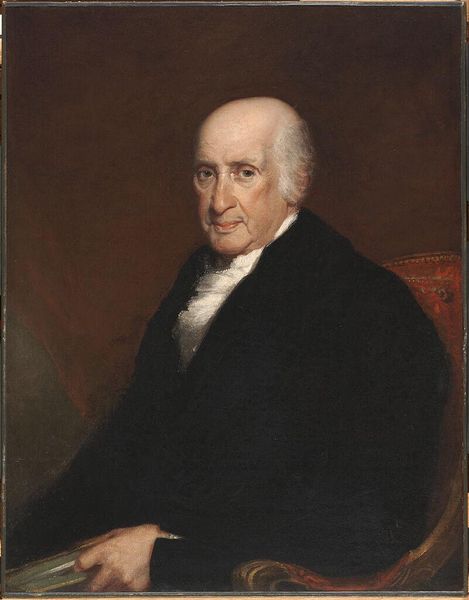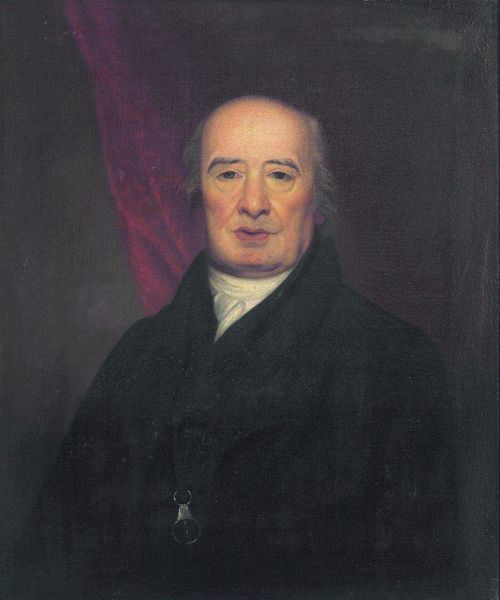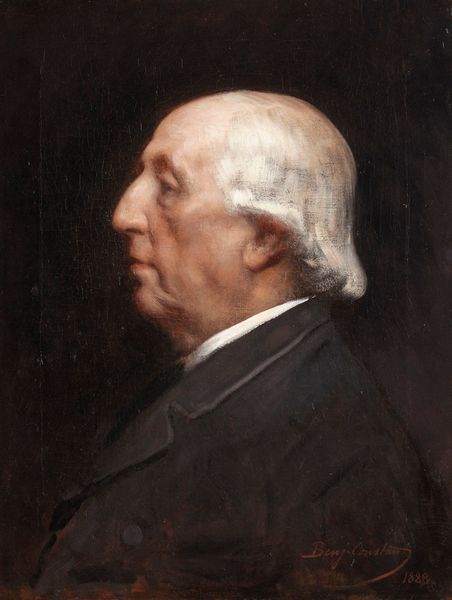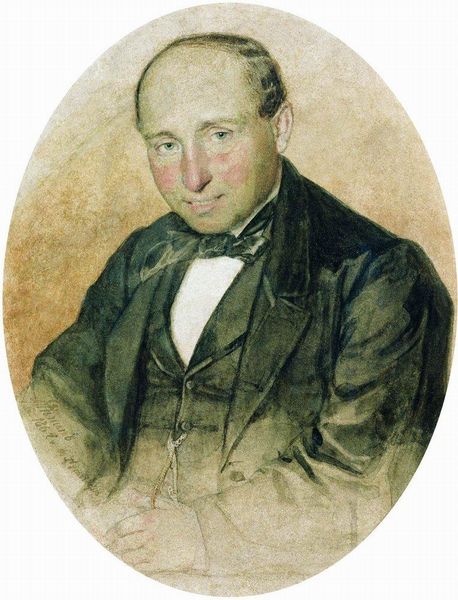
painting, oil-paint
#
portrait
#
portrait
#
painting
#
oil-paint
#
academic-art
#
realism
Copyright: Public domain
Curator: This is James Archer’s portrait of Samuel Cartwright, rendered in oil paint. Immediately, what's your impression? Editor: Solemnity. The weight of something unsaid hangs heavily in the air. It is there in the subtle way his gaze doesn’t quite meet ours and the severe dark jacket contrasting with the soft tones of the face. Curator: Cartwright's legacy certainly demands a critical lens. A physician by trade, he is best known for his, now thoroughly debunked, theories on the supposed biological inferiority of enslaved Africans, coining the term "drapetomania" to pathologize their attempts to escape. Archer painted the portrait against this complex historical backdrop, meaning it invites us to unpack the intertwined dynamics of race, medicine, and power. Editor: It's chilling to consider the symbolism. The deep shadows and the constrained color palette evoke confinement and restriction. The red velvet chair he is seated in: it has the heavy symbolism of a throne but is perhaps alluding to the blood on his hands as a man enabling and promoting slavery. It visually illustrates his supposed position, of someone with great power over others. Curator: It does make one consider Archer’s intent, doesn’t it? Was it to capture a man of science or, perhaps inadvertently, reveal something more sinister beneath the surface? We must acknowledge that such portraits often served to legitimize and perpetuate oppressive systems. Editor: True, we see this across cultures: the image presented is used to assert dominance or control through dress code, composition, and idealization, further solidifying cultural narratives of power. I see hints of it even in the soft, forgiving brushstrokes used on Cartwright's face, which appear in conflict with the hard gaze. The image asks me if I believe what is on the surface. Curator: Understanding these layers of representation is vital. Viewing artworks like this with critical consciousness ensures we neither erase the past nor repeat its most grievous errors. Editor: Precisely. The artwork serves not as an artifact of celebration, but of contemplation and a warning to understand how symbols can normalize deeply unjust realities.
Comments
No comments
Be the first to comment and join the conversation on the ultimate creative platform.

